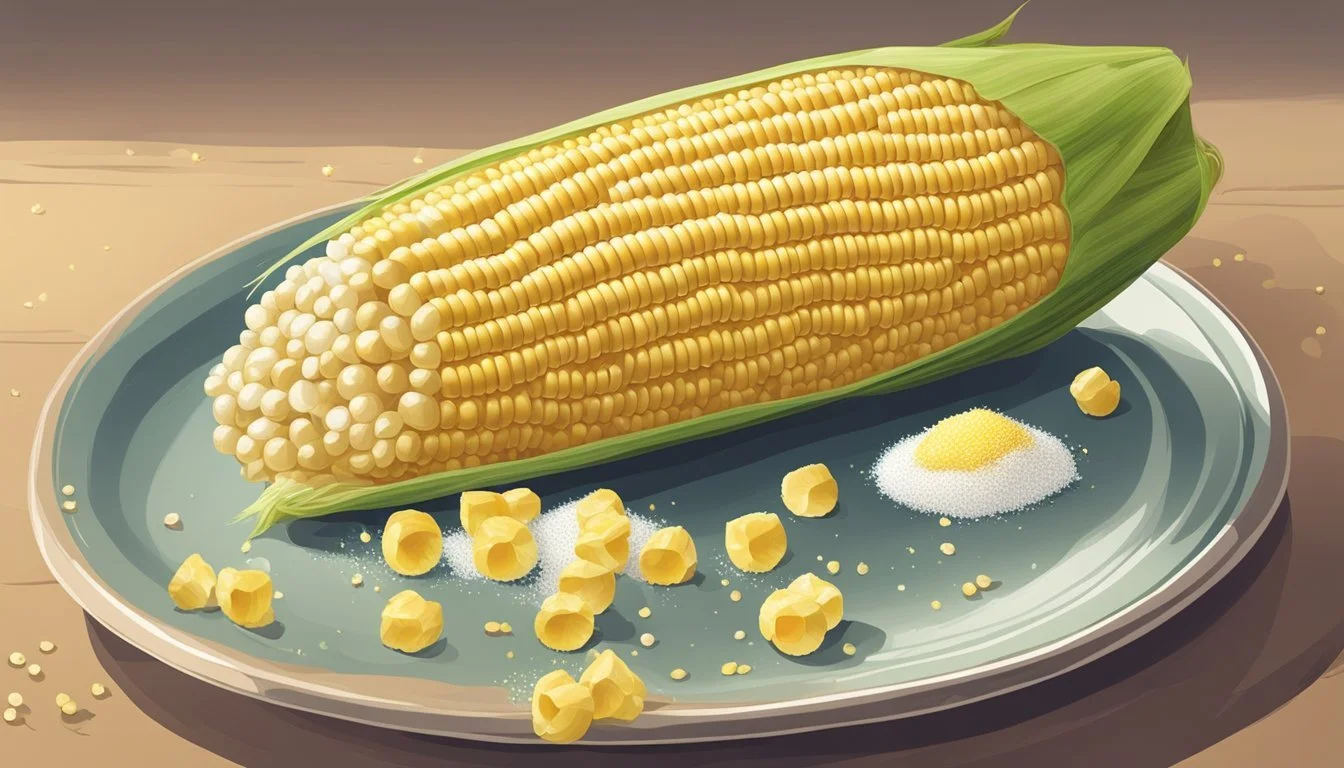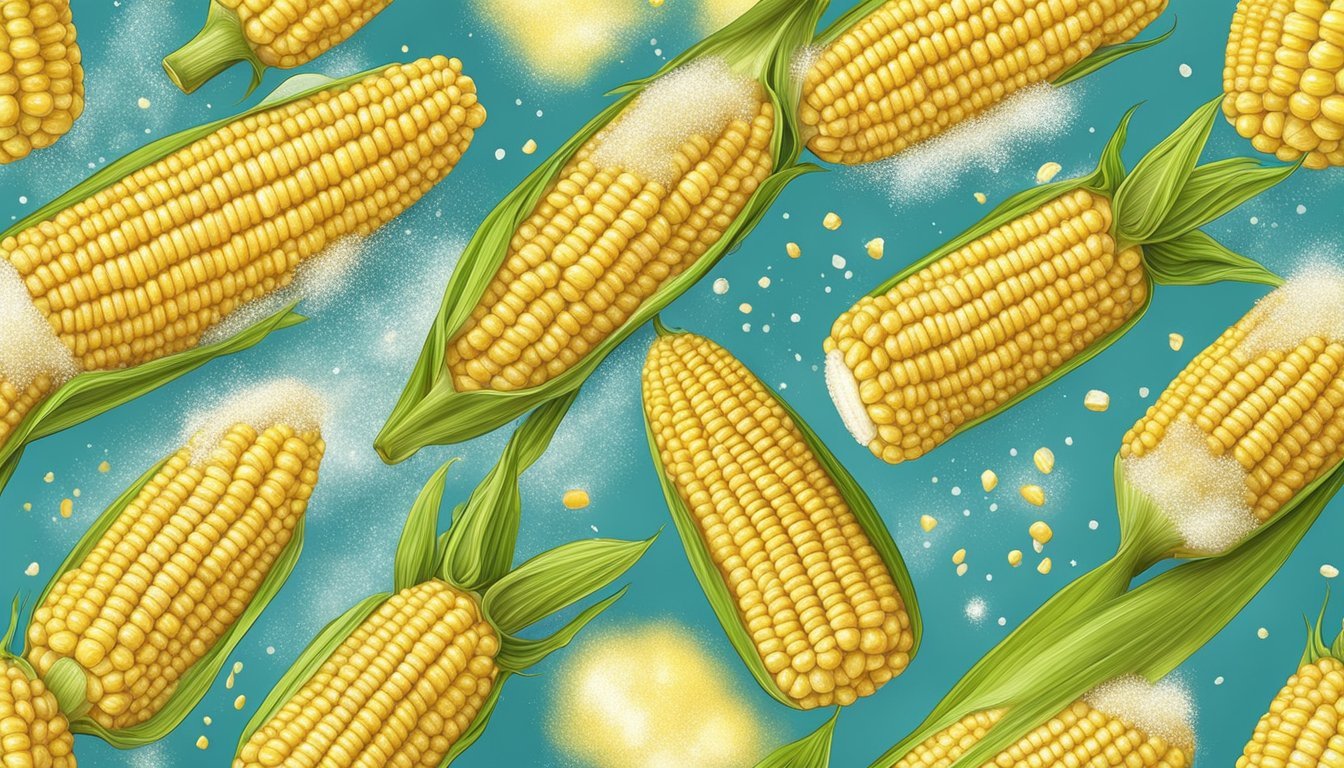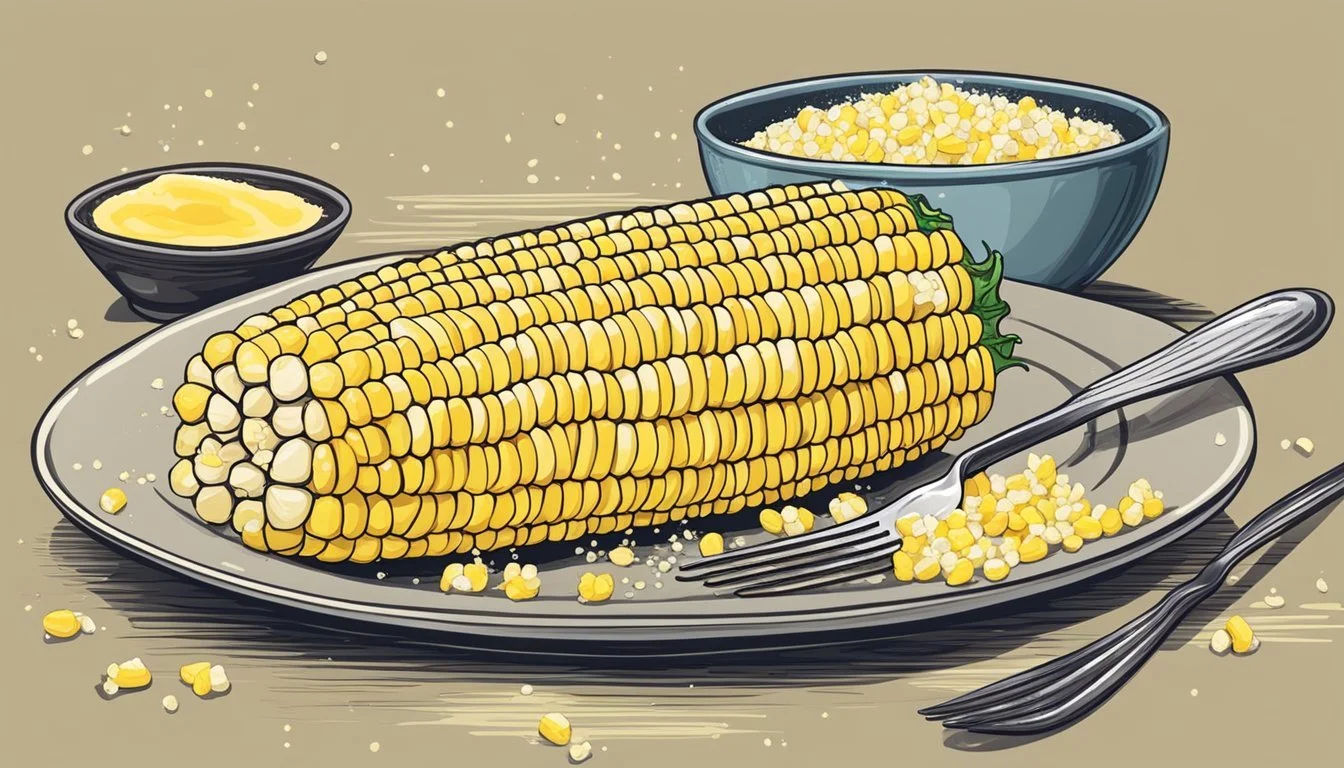How do you eat a sweet corn?
Tips for Enjoying This Staple Snack
Eating sweet corn (how long does corn last?) is a delight enjoyed by many, especially during the summer months when it's at peak freshness. The versatility of corn allows it to be enjoyed in numerous ways, each method bringing out its sweetness and adding a varying texture to the palate. It serves not only as a standalone dish but also as a valuable ingredient in soups, salads, and sides.
When considering how to eat sweet corn, one may choose to boil it, a classic method that enhances the corn's natural sugars and results in a tender kernel. Grilling is another popular option that imparts a smoky flavor and caramelizes the corn's exterior for a more complex taste profile. Roasting in the oven can also yield delicious results, allowing the sweetness to intensify and providing a pleasing, slightly crunchy bite.
Regardless of the cooking method, sweet corn typically needs minimal seasoning, often just a dash of salt, pepper, and a pat of butter to elevate its natural flavor. This simplicity allows the corn's true taste to shine through, making it a favored element in countless meals across various cuisines.
The Basics of Sweet Corn
Sweet corn is a staple of the American summer, enjoyed for its succulence and sweetness. It is essential to appreciate its characteristics and peak availability to maximize both flavor and nutrition.
Understanding Sweet Corn
Sweet corn, distinct from its field corn counterpart, is harvested when the kernels are tender and at the milk stage. This state of maturity is crucial, as it's when the sugar content in the kernels is at its highest before it begins converting into starch. Sweet corn is usually yellow, white, or a combination of both, known as bi-color corn. Its taste is a beloved balance of sweetness and freshness, making it a versatile ingredient in a variety of dishes or simply enjoyed on its own.
There are various culinary methods to prepare sweet corn, including boiling, grilling, microwaving, and roasting. Each technique brings out its unique flavor and texture:
Boiling: A classic method that involves cooking shucked corn in boiling salted water for about four to seven minutes.
Grilling: The corn is grilled over moderately hot coals, turning occasionally until the kernels are lightly browned, which typically takes 10 to 20 minutes.
Microwaving: Keep the husk on the corn and cook it on high for about 8 minutes, turning halfway through the cooking time.
Roasting: Wrapped in foil with butter, corn can be oven-roasted at 500°F (260°C) for about 30 to 45 minutes on the center rack.
Optimal Season for Sweet Corn
The optimal time to enjoy sweet corn is during the summer months when it is in season. This period typically stretches from May through September in the United States, with the peak harvest occurring in July and August. During this time, sweet corn reaches its maximum flavor profile and nutritional value. The summer season aligns with traditional American culinary celebrations, where sweet corn is often a featured dish at barbecues and picnics.
Farmers markets and grocery stores are abundant with fresh sweet corn throughout the summer months. When selecting ears of corn, look for bright green, snugly wrapped husks and golden, sticky silks at the top, which indicate freshness. The kernels should be plump and in tight rows, and a pierced kernel should spurt milky juice, signaling its prime state for consumption.
Preparation Before Cooking
Proper preparation of sweet corn enhances its flavor and ensures a satisfying culinary experience. This involves choosing the best quality ears, efficiently husking, and meticulous cleaning.
Selecting Quality Ears of Corn
When at the grocery store, one should look for fresh sweet corn with bright green, snugly wrapped husks and golden brown, sticky tassels. These signs usually indicate freshness. The kernels should be plump and in tight rows, and the cob should feel firm to the touch.
Husking the Corn
To husk the corn, peel back the outer green layers and remove all of them until the ear is bare. Be sure to strip away the silk threads by hand, as these are not pleasurable to eat. Some advocate for keeping the husk attached at the base to provide a handle for eating, but this is optional and depends on the cooking method.
Cleaning and Handling
After husking, the corn should be washed under cold water to ensure all the silk and any field debris are rinsed off. It's important to handle the corn gently to avoid bruising the kernels. Once cleaned, the ears of corn are ready to be cooked using one's preferred method, whether it's boiling, grilling, or roasting.
Cooking Methods
Sweet corn can be prepared in a variety of ways, each offering its own unique flavor and texture. Here are some common methods to cook corn on the cob, with key details on the process and cooking times.
Boiling Sweet Corn
Boiling is a traditional method that is quick and easy. One begins by filling a large pot with water and bringing it to a boil. The sweet corn, once shucked, is placed into the boiling water. It is common to boil corn on the cob for approximately 4-7 minutes; this retains its crispness and sweetness.
Grilling Corn on the Cob
Grilling imbues corn with a smoky flavor. Heat the grill until it's moderately hot and cook the corn, shucked or in husks, directly on the grates. Corn on the cob typically requires about 10-20 minutes on the grill, being turned occasionally to cook evenly.
Steaming Corn
For steaming, one needs a pot with a steamer basket. After shucking the corn, the cobs are placed in the basket. Cover the pot with a lid and let the corn steam until tender, which usually takes about 7-10 minutes.
Microwaving Corn
Microwaving corn is a quick and less messy method. With the husk on, microwave four ears of corn for about 4 minutes, turn them, and continue to cook for another 4 minutes. This method helps retain moisture, resulting in juicy kernels.
Baking Corn
Baking corn on the cob is another method that deepens its natural sweetness. Preheat the oven, and place shucked ears of corn wrapped in foil on a tray. Typically, corn is baked at 350°F to 400°F for about 30-45 minutes, until the corn is tender to touch.
Enhancing Flavor
Sweet corn offers a natural sweetness that can be accentuated with the right combination of seasonings, butter, herbs, and complementary food pairings. By selecting the appropriate flavor enhancers, one can elevate the taste of sweet corn to new heights.
Seasonings for Sweet Corn
The proper selection of seasonings can significantly boost the taste of sweet corn. Common seasonings include:
Salt: A pinch of salt can highlight the natural sweetness of the corn.
Sugar: A light sprinkle enhances the inherent sugar in the corn, especially when grilling or roasting.
Pepper: Freshly ground pepper adds a bit of spice and complexity.
Spices: A dash of paprika or chili powder can impart a smoky or spicy flavor.
Butter and Herbs Choices
Butter and herbs form a classic pairing with sweet corn that enriches its flavor profile. Effective combinations include:
Butter: Unsalted butter allows one to control the saltiness while adding creaminess.
Herbs: Freshly chopped herbs such as coriander or other soft herbs can provide a burst of freshness.
Seasoned butters: Integrating spices or herbs into softened butter creates a flavorful spread.
Pairing with Other Foods
Sweet corn's versatility allows it to be paired with a variety of foods to create a well-rounded meal. Some excellent food pairings are:
Sweet potato: Roasted or mashed, it complements the sweetness of the corn.
Tomato: Fresh, diced tomatoes add acidity and juiciness.
Red onion: Provides a sharp contrast that balances the corn's sweetness.
Beans: Black beans or other beans offer a hearty texture and additional protein.
By using these seasonings, butter and herb mixtures, and food pairings, sweet corn can be transformed from a simple side dish into a flavorful and memorable part of any meal.
Serving Suggestions
Sweet corn, with its natural succulence and sugariness, offers versatility in preparation and can be the highlight of a meal. Both traditional and inventive methods can elevate its flavors, whether served as a central element on the plate or as a complimentary side.
Corn on the Plate
Corn on the cob is the quintessence of summer delight. It can be prepared simply by boiling or grilling until the kernels are tender, typically 10 to 20 minutes. Elevating the classic, Mexican street corn incorporates bold flavors such as lime, chili powder, and cotija cheese, creating a blend of tangy and savory tastes. For a fresh experience, one might opt to leave the corn uncooked, especially if sourced straight from a vegetable garden, to enjoy its pure, sweet crunch.
Sweet Corn as a Side Dish
Sweet corn serves as a diverse side dish, complementing a wide range of meals. It can be oven roasted wrapped in heavy-duty foil with a dab of butter, or added to vibrant dishes such as succotash, a medley of corn, lima beans, and other vegetables. An alternative sumptuous side dish is sweet corn soup; a creamy and comforting blend, especially appealing during cooler seasons. Each dish allows the corn's freshness to shine through, pairing well with meats, seafood, or as part of a vegetarian spread.
Preservation and Storage
Maintaining the freshness of sweet corn requires proper preservation techniques. Storing corn effectively ensures that one can enjoy the taste of summer well beyond its peak season.
Refrigerating Cooked Corn
To refrigerate cooked sweet corn, it's best to store it in an airtight container. For optimal freshness, it's recommended to wrap the corn in a damp paper towel before placing it in the container. This method helps to retain the corn's moisture and flavor for up to three to five days.
Freezing Corn for Later Use
When it comes to freezing corn, one has two primary options: freezing whole cobs or freezing the kernels. For freezing whole cobs, wrap each cob individually in plastic wrap then place them in a freezer bag. To freeze the kernels, first blanch the corn for about four minutes, plunge them into ice water to cool, then cut the kernels from the cob and transfer them into freezer bags. Properly frozen corn can last in the freezer for up to eight to twelve months. When ready to use, one can cook the frozen kernels without thawing for a quick addition to meals.
Suggested Cooking Tips for Frozen Corn:
Cook without thawing to maintain a crisp texture.
Add directly to soups, stews, or warm dishes during the last few minutes of cooking.
Following these storage tips allows one to enjoy fresh-picked corn's flavor throughout the year.
Differences in Corn Varieties
Corn, or maize, has been cultivated for thousands of years with several varieties available. It is key to recognize how sweet corn differs from other types such as field corn; the former prized for its natural sweetness and creamy texture, and the latter for its utility in various products.
Sweet Corn vs. Field Corn
Sweet Corn:
Harvested while kernels are tender and before sugar converts to starch
Known for its high sugar content, natural sweetness, and creamy texture
Typically consumed directly by humans
Field Corn (Dent Corn):
Harvested when kernels are dry, featuring a characteristic dent on the top
Primarily used for animal feed, corn meal, corn starch, and corn syrup
Stalks are taller compared to sweet corn plants
Understanding Maize Origins
Originated in South America, maize has been a staple food for centuries.
Through selective breeding, indigenous peoples developed the crop into today’s staple varieties.
Sweet corn, specifically, is a result of naturally occurring mutations that were encouraged to perpetuate its desirable traits.
Health and Nutritional Information
Sweet corn is a nutrient-rich food that provides a variety of health benefits due to its content of vitamins, minerals, and fiber. It's important to consider these benefits in the context of one's overall diet.
Sweet Corn Nutritional Benefits
Sweet corn is a source of several vitamins and minerals that are essential for maintaining good health. Specifically, it offers:
Fiber: Aids in digestion and can help in maintaining a healthy weight.
Vitamins: Includes Vitamin C, which acts as an antioxidant, and Vitamin B, especially folate which is crucial for cell function and tissue growth.
Minerals: Provides potassium which is important for blood pressure control and phosphorus, necessary for bone health.
A typical nutritional profile for one cup (164 grams) of sweet yellow corn might look like this:
Nutrient Amount Calories 177 Protein 5.4 grams Carbohydrates 41 grams Fiber 4.6 grams Sugars 6.8 grams Fat 2.1 grams Vitamins B vitamins, Vitamin C Minerals Potassium, Phosphorus
Dietary Considerations of Corn
When incorporating corn into a diet, it should be done thoughtfully:
Carbohydrates: Corn is high in carbohydrates, thus it can affect blood sugar levels and should be consumed in moderation, especially for individuals managing diabetes.
Fiber Content: It's rich in fiber, making it beneficial for digestive health.
Preparation Matters: The preparation of corn can significantly alter its nutritional value. For example, boiling corn can increase its antioxidant activity, whereas frying it can add unnecessary fats.
Fun Facts About Corn
Sweet corn, a culinary staple in many diets, boasts a rich history and a significant presence in popular culture. Its kernels and growth patterns have intrigued people for centuries.
Corn in Popular Culture
Sweet corn plays a vibrant role in popular culture, symbolizing summer and agricultural prowess. It appears in numerous festivals, often as a celebrated food during summer months when it's harvested. Corn has also popped its way into the entertainment industry—popcorn is an essential part of movie-going experiences across the globe, where the sound of popping kernels and the aroma of butter are synonymous with cinema.
Popping Phenomenon: Popcorn, a type of corn that expands and puffs up when heated, is a beloved snack.
Summer Associations: Sweet corn is frequently associated with summer BBQs, fairs, and picnics.
Historical Significance of Corn
Corn has a storied past stretching back to over 7,000 years ago where it was a foundational crop for Native Americans. It was not only a food source but also used in various applications, such as chewing gum made from sweet corn leaves.
Amazonian Beginnings: Contrary to the notion that the Amazon is merely a biodiverse rainforest, it is now believed to have played a role in cultivating and spreading the growth of corn.
Silk and Pollen: The process of pollination is critical to the production of corn, where wind carries the pollen from the male part (tassels) to the female part (silks), each silk thread connecting to an individual kernel.
The different cultivars of corn, ranging from dent, flint, to sweet corn, have unique attributes and uses, making corn a versatile and central component to myriad agricultural practices worldwide.








